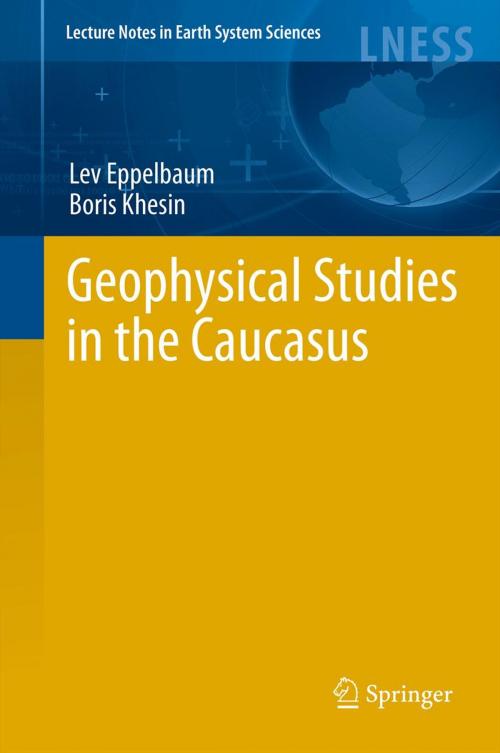Geophysical Studies in the Caucasus
Nonfiction, Science & Nature, Science, Earth Sciences, Geophysics, Geology| Author: | Boris Khesin, Lev Eppelbaum | ISBN: | 9783540766193 |
| Publisher: | Springer Berlin Heidelberg | Publication: | June 14, 2012 |
| Imprint: | Springer | Language: | English |
| Author: | Boris Khesin, Lev Eppelbaum |
| ISBN: | 9783540766193 |
| Publisher: | Springer Berlin Heidelberg |
| Publication: | June 14, 2012 |
| Imprint: | Springer |
| Language: | English |
The subject of this book is the methodology and results of integrated geophysical investigations in the Caucasian region, mainly interpretation of magnetic and gravity anomalies with utilization of a huge petrophysical database for the evaluation of geological structure and mineral resources. Relative voluminous geophysical data are useful for the Earth Sciences researchers interested in the Caucasian region (and adjacent and similar regions) characterized by complicated geological structure, inclined magnetization (polarization), uneven topography and mountain/sea transition. Examination of geophysical fields verified by super-deep wells drilling indicates that magmatic rocks of the Lesser Caucasus are extended northward under thick sedimentary cover of the Kura Depression up to the Greater Caucasus. These rocks form hidden petroleum-bearing traps of a newly identified type. On the basis of geophysical studies (mainly inexpensive magnetic and electric methods), a new copper-polymetallic province in the Greater Caucasus has been revealed. a newly developed integrated approach and special information-statistical techniques for processing and interpretation of geophysical data facilitate detection of important geological features, e.g. hidden intersections of linear structures that control location of large commercial ore and oil-and-gas deposits, as well as focuses of dangerous geodynamic events at a depth. Numerous illustrations (including colour) elucidate different problems and solutions on various scales and in diverse geological-geophysical environments. Many aspects of this book have been presented at the teaching courses for bachelors, masters and doctors at the Tel-Aviv University (Tel Aviv, Israel) and Ben-Gurion University (Be’er-Sheva, Israel). Benefits to readers are predetermined by the combination of the authors many-years personal experience in the geophysical studies of Azerbaijan and other regions of the Caucasus with the authors' knowledge of the modern level of geophysics in the world.
The subject of this book is the methodology and results of integrated geophysical investigations in the Caucasian region, mainly interpretation of magnetic and gravity anomalies with utilization of a huge petrophysical database for the evaluation of geological structure and mineral resources. Relative voluminous geophysical data are useful for the Earth Sciences researchers interested in the Caucasian region (and adjacent and similar regions) characterized by complicated geological structure, inclined magnetization (polarization), uneven topography and mountain/sea transition. Examination of geophysical fields verified by super-deep wells drilling indicates that magmatic rocks of the Lesser Caucasus are extended northward under thick sedimentary cover of the Kura Depression up to the Greater Caucasus. These rocks form hidden petroleum-bearing traps of a newly identified type. On the basis of geophysical studies (mainly inexpensive magnetic and electric methods), a new copper-polymetallic province in the Greater Caucasus has been revealed. a newly developed integrated approach and special information-statistical techniques for processing and interpretation of geophysical data facilitate detection of important geological features, e.g. hidden intersections of linear structures that control location of large commercial ore and oil-and-gas deposits, as well as focuses of dangerous geodynamic events at a depth. Numerous illustrations (including colour) elucidate different problems and solutions on various scales and in diverse geological-geophysical environments. Many aspects of this book have been presented at the teaching courses for bachelors, masters and doctors at the Tel-Aviv University (Tel Aviv, Israel) and Ben-Gurion University (Be’er-Sheva, Israel). Benefits to readers are predetermined by the combination of the authors many-years personal experience in the geophysical studies of Azerbaijan and other regions of the Caucasus with the authors' knowledge of the modern level of geophysics in the world.















